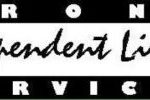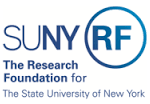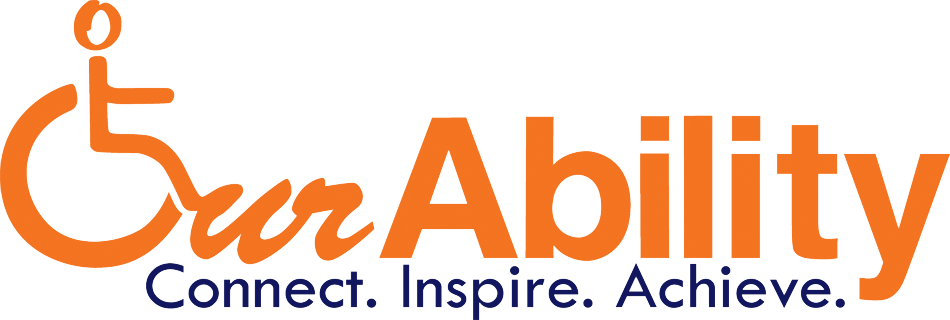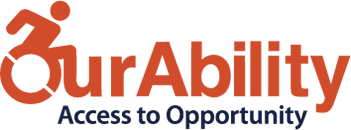
Bronx Independent Living Services Job Opportunity
November 29, 2017
The Research Foundation Suny Job Openings
January 3, 2018Our Ability Alliance Annual Report 2017: Employment New York

John Robinson, Executive Director
Employment New York 2017
Our Ability Alliance Annual Report: Where We Stand in New York State and How to Move Forward
Executive Summary
In September 2014, Governor Cuomo signed Executive Order 136 establishing New York State as an employment first state and assigning the Employment First Commission (EFC) to develop the State’s employment first policy.
The EFC issued a report in March 2015 which contained three major goals:
- 5% increase in the employment rate of individuals with disabilities;

- 5% decrease in the poverty rate;
- engage 100 businesses in adopting policies and practices that support the integrated employment of individuals with disabilities.
As a Business Leadership Network (BLN) in New York State, Our Ability Alliance (Our Ability) was asked to engage 100 business partners (Bullet 3). In addition, the NYS Developmental Disabilities Planning Council (DDPC) asked us to conduct a comprehensive systemic assessment on issues related to employment of individuals with I/DD and issue this report outlining the gaps and systemic needs of the business community.
Our Ability did extensive outreach over the past year to businesses, agencies providing services to individuals with I/DD, colleges and universities, State and local labor and economic developmental entities and self-advocates. In the outreach, Our Ability found that a disconnect existed in the models used in the respective-communities. The business community used an economic model which prioritizes profit margin and cost-saving. The I/DD service community placed more-emphasis on supports, service and placement of individuals in appropriate employment opportunities. This lead to communication and compatibility inconsistencies. The business community is willing to recruit and hire individuals with I/DD but they need assist in establishes points of contact and general education on disability issues.
The I/DD service community needs education in moving away from the human services prioritization and rather focuses on the needs of business including ease of recruitment, employee retention and lowering turnover. There also is a need for sharing success stories and best practices of employing individuals with I/DD by and from all of the sectors involved in this report.
Finally, and perhaps more importantly, is a need to consistently review new policies and procedures impacting on employment of people with I/DD to ensure that they don’t create unnecessary obstacles for individuals trying to make integrated employment the first and preferred employment option.
Findings
The overall philosophy of the Employment First Commission must be restated at the onset of the Findings section. The philosophy is that the first and preferred employment service option for citizens of New York State should be competitive-based integrated employment. Certainly, the citizenry of New York State includes individuals with I/DD. Furthermore, all programs (including the 1915c and 1115 Medicaid waivers) should align with this philosophy and not create barriers and opposing incentives.
There is also an overall need (across systems and individuals) for individualized benefits advisement. Individuals need to be able to understand when and how their level of employment will impact upon the benefits they receive. Both of these issues are larger than the scope of this report. However, without acknowledging and addressing these issues, the State’s ability to maximize competitive employment for individuals with I/DD will always be somewhat compromised.
As a group, most businesses have not considered employing individuals with I/DD. Sporadically, businesses will have stories of experiences with people with disabilities (with disabilities defined broadly). These stories are generally among small, local businesses or national chain stores. Very few systematically recruit and hire people with disabilities (again broadly defined) as a workforce development strategy.
Over the past year, Our Ability (sometimes in collaboration with the NYSDDPC) did document some best practices and success stories to develop a positive business-to-business outreach mechanism.
Some examples are as-follows:
- Southern Tier Brewing Company – http://youtu.be/XyWs6nv6Okg?list=PLztRMHqBrau37yqOZReYhcUiVkli2n886
- Price Chopper – http://youtu.be/ksg6PXFOdAk
- Siena College – http://youtu.be/_71KfS0H9oI
- Camelot Printing (Our Ability produced) – http://youtu.be/tXrQhMYkL0s
- Teresian House (Our Ability produced) – http://youtu.be/-_Fin00VghQ
In addition, there is the following example of a best practices:
CVS Mock Store – CVS began their mock store as an employee training program in New York City and is interested in replicating across the State. This educational tool provides an inclusive place where new employees (with disabilities and without) can train in a store setting, while not having the pressure of being in an actual store. CVS has trained several individuals with I/DD in this fashion and they are currently employed in different stores in New York City.
Most of the businesses contacted also expressed the feeling that there is a lack of qualified and prepared employees in their local communities. Businesses are always looking for qualified and prepared employees and many did express an interest in learning more about hiring people with disabilities. Businesses outreach to prospective employees remains somewhat fragmented. There are sites like Monster.com, other employment sites and publications, One-Stop Centers as well as local newspapers and word-of-mouth. There is no systemic link (besides Our Ability) between prospective employers and individuals with I/DD (or disabilities). In addition, as time is an important factor for business owners, managers and human resources people, there is perhaps a need to simplify the application process for prospective employees and create an easier identification of job opportunities and specific skill set (i.e. IBM project). This will be useful for people with and without disabilities.
Also – See Price Chopper / Market 32 HireAdvantage
Any education program or other intervention should consider that most businesses do not understand enough about individuals with I/DD. This “unknown” characteristic leads to concern about “appropriate etiquette” (not wanting to say the wrong thing), fear about the need for expensive accommodation or exposure to litigation in case of a separation from employment.
Overall, hiring people with individuals with I/DD must make business sense for a company. Therefore, for an employment program for individuals with I/DD to have systemic appeal, it must make be expressed in business terms (i.e. dedicated employees, longevity…) not social terms (i.e. because it’s the right thing to do). And a business case can be made.
The self-advocates that Our Ability contacted came through a variety of channels (SANYS, DD agencies, ILCs). We intentionally sought a population of individuals outside of those served by OPWDD. Although it seems basic, self-advocates need to know what jobs are available in their respective communities, when they are prepared and qualified for these jobs, what jobs they can be made prepared and qualified for (through education programs) and how to access that assistance. While there are successful stories about competitive employment among the self-advocates contacted, there does not seem to be a systemic mechanism (again besides Our Ability) to link these people to prospective employers. Overall, there is a need for self-advocates and parents to continue to play a proactive role in directing the service delivery system at it relates to employment.
Our Ability did spend a good deal of time with DD agencies over the past year. This project was undertaken during a transitional period in New York State regarding the DD service delivery system. The system is moving from a fee-for-service based system to a managed care system. Therefore, in drafting this report, we tried to focus on the proposed system that is developing to support people with intellectual and developmental disabilities. Again, the 1115 Medicaid waivers should not create barriers and opposing incentives to the competitive employment of people with I/DD. Furthermore, on the whole, DD agencies lack the ability to determine the impact that competitive employment will have on an individual’s benefits in an efficient and effective manner. Both of these can have a major impact on the overall push to increase competitive employment of people with I/DD in New York State.
There is a lack of understanding of the Business Model by the employment-related service delivery system for individuals with I/DD. Agencies naturally have a human services approach which focus on the support and promotion of individuals with I/DD through programs such things as job coaching and tax credits. These issues are secondarily important to the business community which places a higher priority on job retention, employee loyalty and reduced operating costs. The work done in completing the document “Employment_Ability_Toolkit” is a good starting point for understanding the business. This is not a criticism of the system that supports individuals with I/DD in New York. Rather, it expresses a need to better incentive the promotion of integrated, competitive employment as the first and preferred service option (i.e. Employment First philosophy) and to examine each component of the system with this as the final goal. The time may be right for this to occur as the State is revamping their service delivery system for individuals with I/DD.
The generic system that supports labor and economic development is supportive of including individuals with I/DD. There is a need for better knowledge, integration and use of their resources by individuals with I/DD and the service delivery system.
Recommendations
General Recommendations
- Examine the new Medicaid Waiver being implemented in New York State to ensure that competitive-based integrated employment is the first and preferred employment service option.
- Ensure that the implementation of other State and Federal laws (including Benefits) are not creating unnecessary barriers to the Employment First philosophy.
Business Community
- Education of the business community continues around understanding disabilities, the truth about reasonable accommodation and how to recruit people with I/DD.
- Education of the business on where to go with questions about individual’s benefits.
- A single source of Information for businesses about success stories and best practices.
- Improved linkage for businesses to employees with I/DD.
- Improved linkage to education providers (schools, ACCESS-VR, colleges) to share the exact skills needed by individuals with I/DD to qualify for jobs.
- Engage with vendors, suppliers and networked businesses of those organizations Our Ability already assists with employment.
Infrastructure Supporting Individuals with I/DD
- Reinforce the Recommendations made in the General Recommendations section above.
- Education on making the Business Case (see Employability Toolkit).
- Education to improve information related to the impact that competitive employment will have on individuals with I/DD’s benefits.
- Improved connections to the generic system that supports labor and economic development as well as directly to employers
Infrastructure that is not-DD Specific
- Assist agencies, public schools and universities to better prepare students/graduates to enter the workforce.
- Build increased middle-skills training to assist in skill development of individuals with I/DD.
- Improve direct connections between individuals with I/DD, the DD service delivery system and the generic system that supports labor and economic development.
Self-Advocates
- Educate self-advocates about the success in being independent through education and employment opportunities in New York State.
- Information about success stories and best practices about individuals with I/DD and competitive employment.
- Improved availability of information related to the impact that competitive employment will have on benefits.
- Continued work on establishing a more-direct connection between prospective employees with I/DD and employers.
- Continued work by the Self-Advocacy to promote integrated, competitive employment at the local, regional and Statewide level.


